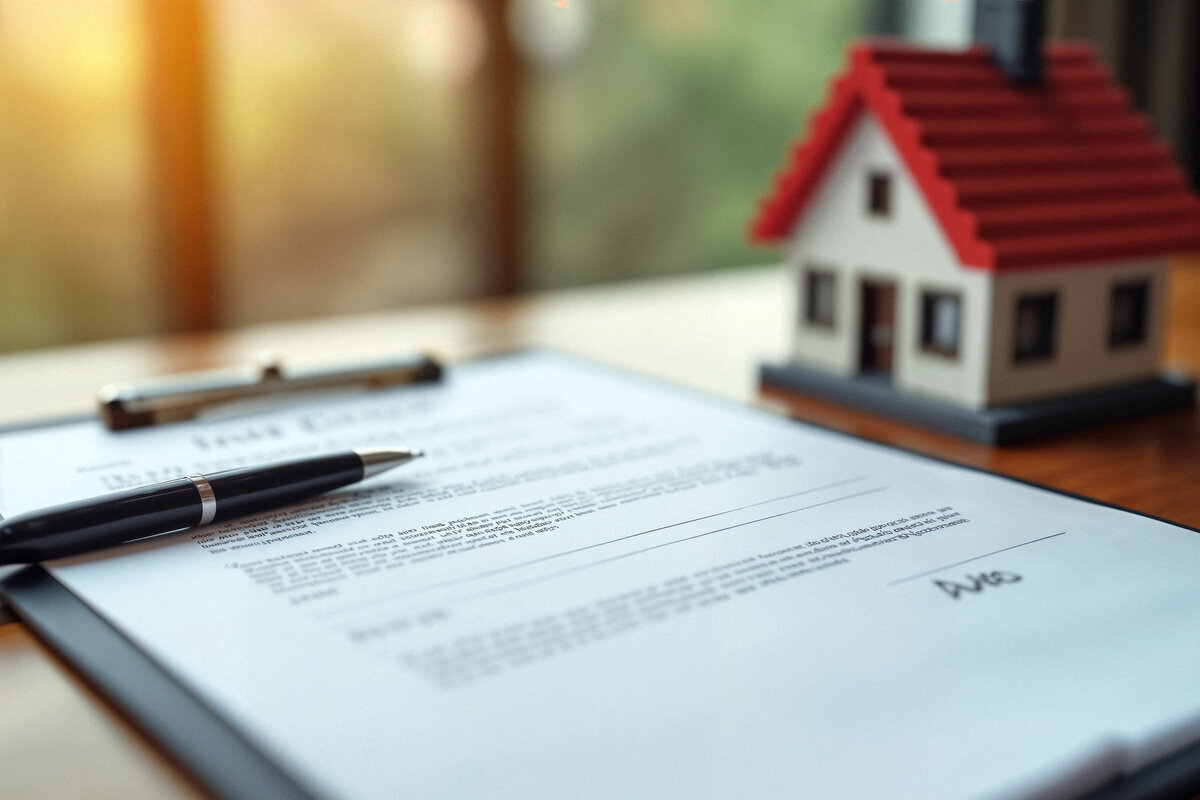With increased inflation and rising home ownership costs, more and more homeowners have been falling behind on their mortgage payments this past year. Nationwide, foreclosures increased approximately 35% in the third quarter of 2023. This is evidence of the economic hardship that homeowners have been experiencing post-pandemic. In the borough of Brooklyn alone, foreclosures almost doubled in the third quarter of 2023. The recent level of foreclosure filings in Brooklyn has not been this high since before the pandemic started in 2020. As a result, foreclosure lawsuits will be served upon an increasing number of homeowners and that number is expected to increase further in 2024.
When a homeowner receives foreclosure papers, they may panic and may not be sure what to do. However, they do have rights, legal protections, and options. In this article, we will explain what options are available to protect a home from foreclosure.
When a Homeowner Defaults on a Mortgage
In New York, once a homeowner is in default on their mortgage, if a mortgage lender wants to file a foreclosure lawsuit, they must notify the homeowner and wait 90 days. They are required to send a 90-day notice that informs the homeowner how far behind on their mortgage they are and must provide them with a list of local housing counselors. After the 90-day period lapses, the mortgage company may file a foreclosure lawsuit against the homeowner as well as anyone else who has an interest in the property. The mortgage company will then serve the summons and complaint upon the homeowner. If the mortgage company fails to properly send the 90-day notice to the homeowner, then the homeowner will be able to use that as a defense against the foreclosure lawsuit to try to get the case dismissed.
Types of Service & Filing an Answer
A foreclosure summons and complaint will typically be served on a homeowner in one of three ways: (1) in person, (2) by “nail and mail” service or (3) by mail with service upon “a person of suitable age and discretion”. A homeowner has 20 days to answer if served in person or 30 days if another method is used. See NY CPLR § 306 and 308. If they fail to file an answer, they will be in default and will not be able to impose any defenses in the case without leave and permission from the court. However, homeowners will still have a chance to file an answer with the Court if they appear at the foreclosure settlement conference. They have thirty days from their initial appearance at the settlement conference to file an answer with the Court. See NY CPLR § 3408.
Hiring an Attorney
When a homeowner is served with a foreclosure lawsuit, their best course of action is to hire an experienced foreclosure attorney. It is not recommended to file an answer pro se (without an attorney), since a homeowner will most likely not know which defenses to interpose in their answer. Filing an answer preserves a homeowner’s rights and will aid their ability to oppose a motion for summary judgment brought by the plaintiff. Two common defenses include: (1) the plaintiff lacks standing, and (2) the plaintiff has failed to provide the required notice of default.
Reviewing Home Retention Options
Hiring an experienced foreclosure attorney will also enable a homeowner to review their home retention options including applying for a loan modification in the foreclosure settlement part, fighting the lawsuit in state court, or filing for Chapter 13 or Chapter 7 bankruptcy. Seeking a loan modification in the foreclosure settlement part provides a homeowner who qualifies with a modified mortgage that will bring the homeowner current on the loan. Once the modification is final, the plaintiff will be required to discontinue the foreclosure lawsuit. However, a modified mortgage is typically at the prevailing market interest rate. This was great for homeowners when the market rate was between 2 and 4 percent. Unfortunately, at the present time, mortgage rates are the highest they have been in years and presently loan modifications are being offered with rates as high as 7-8 percent. Additionally, some lenders and services are also asking for a down payment towards the modification and sometimes a significant one. If a homeowner presently has an interest rate that is lower (sometimes much lower) than that, they may want to think twice before agreeing to a loan modification. With a high modified rate, they will end up paying the lender significantly more over the life of their loan and their new monthly payment can be higher and sometimes even much higher than their original loan payment or a previously modified payment.
A homeowner can also fight a foreclosure lawsuit in state court. This can buy them time to reach a possible resolution of their mortgage default, or at least buy them more time to stay in their home. Litigating a foreclosure can typically slow down the foreclosure process by more than a year and sometimes even years. Unless a homeowner has a particularly powerful defense available to them, fighting the lawsuit in state court unfortunately will not prevent the eventual sale of the property. Contesting a foreclosure action can also be expensive for a homeowner from a legal fee perspective since it requires litigation.
Chapter 13 Bankruptcy
Beyond reinstating the loan by paying the full amount due to bring the loan current, the best way to retain a home in foreclosure can often be by filing for Chapter 13 bankruptcy. First, the bankruptcy filing typically provides an immediate stay against the foreclosure action. Once the automatic stay is triggered, the lender or servicer will not be able to file a motion for summary judgment or proceed with their case. The bankruptcy filing will typically even stop a foreclosure sale date. In a chapter 13 bankruptcy proceeding, a homeowner will be able to pay their mortgage arrears and other debt over a 60-month payment plan that is interest free on most debts. Simultaneously, upon filing their chapter 13 case, the homeowner needs to resume making their regular monthly mortgage payment and the lender will be required to accept it. For a chapter 13 bankruptcy to be viable, the debtor must propose a plan that is feasible, in other words they must be able to demonstrate they can afford their living expenses, as well as their regular mortgage payments and proposed chapter 13 plan payment. The homeowner will be able to keep their current interest rate and even a previously obtained modification rate, and at the end of the plan, their mortgage loan is reinstated. If affordable, this is a much more attractive and financially beneficial option than paying a mortgage at a modified rate at current market rates. Once the chapter 13 case has ended, the plaintiff would then be required to discontinue their foreclosure lawsuit (sometimes this even happens before the end of the bankruptcy). The sooner the homeowner can file for Chapter 13 the better, since mortgage arrears continue to accrue with each month that passes. Additionally, in some bankruptcy courts, a homeowner may seek a loan modification if their plan to pay their arrears is not feasible (not affordable). If offered, loss mitigation programs in a bankruptcy court seek to help homeowners retain their homes. The process is overseen by a bankruptcy judge, and we find they have a better success rate than the foreclosure settlement part in state court.
Chapter 7 Bankruptcy
A homeowner may seek bankruptcy protection in Chapter 7 to stay a foreclosure proceeding against them as well. However, unlike chapter 13 bankruptcy, chapter 7 bankruptcy does not provide a payment plan to pay back any mortgage arrears. As a result, chapter 7 is typically not a realistic option to help a debtor ultimately keep a home. It also should be noted there are equity limits that a debtor can protect in chapter 7 bankruptcy. In New York City and its surrounding counties, a debtor can protect up to $179,950 of equity in their property. Sometimes loss mitigation in a chapter 7 bankruptcy can be an option as well. One of the additional benefits of pursuing loss mitigation in Chapter 7 is that the discharge obtained in a Chapter 7 case can at least eliminate most if not all their other debt, leaving them with just the mortgage arrears to resolve. The negative aspect of relying upon loss mitigation in a chapter 7 proceeding to keep a home, is that there is no guarantee a homeowner will obtain a modification offer. Furthermore, they are increasingly becoming more difficult to get and they have higher interest rates which may result in a higher mortgage payment than before. As an additional positive benefit, if the homeowner is underwater on the mortgage, meaning they owe more than their home is worth, a Chapter 7 bankruptcy can be used to extinguish their personal liability on the mortgage note and avoid liability on any deficiency judgement that would result from the foreclosure.
Contact The Law Offices of David I. Pankin, P.C.
In sum, unless there is a basis or strong reason to challenge a foreclosure action, a homeowner’s best course of action, if affordable, may be to pay the arrears through a chapter 13 repayment plan. That is almost a guaranteed option to keep a house and retain a good interest rate on a mortgage, if the homeowner already has one. At the Law Offices of David I. Pankin, P.C., we have over 25 years of experience representing homeowners facing foreclosure in both state court and bankruptcy court. We have helped hundreds of New York homeowners keep their homes. If you are at risk of foreclosure, please feel free to contact our offices at (888) 529-9600 or by using our easy online contact form. Contact us today to schedule a free consultation.






